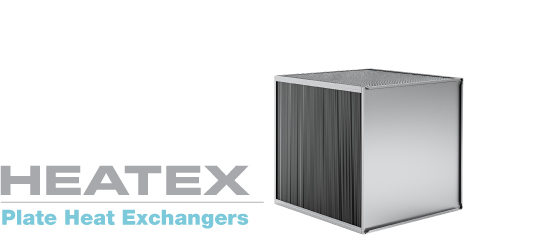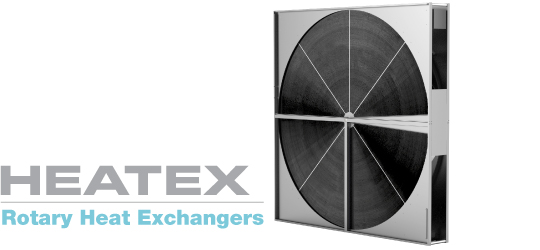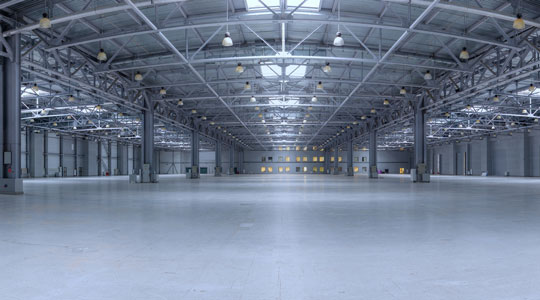Heat and Energy Recovery
Heat exchanger ventilation systems are key to maintaining healthy and comfortable indoor air quality (IAQ) in most commercial buildings. They all need an air handling unit, including a heat exchanger for efficient heat or energy recovery.

Benefits of Heat Exchanger Ventilation in Commercial Settings
Adequate indoor air quality (IAQ) involves many factors depending on the local situation and climate. Health issues like breathing problems can arise from air containing dust, pollen, or other contaminants. A poor indoor environment can also damage buildings.
Commercial ventilation systems (non-residential) utilize air handling units (AHUs) that tend to be larger and are designed for buildings such as offices, hotels, and airports. The challenge is to achieve a comfortable indoor air quality (IAQ) with as little energy input as possible. This means that the pressure drop should be low (less fan power is needed) and the thermal and humidity efficiency should be high (less energy is consumed for heating, cooling, and humidity control).
Depending on the geographical region, the primary purpose of the heat exchanger ventilation varies between heating, cooling (and possibly also dehumidifying) the outdoor air before it enters the building.
The air handling unit (AHU) is at the center of a commercial ventilation system. At a minimum, an AHU includes one or several fans in each air channel to move the air through the unit. Filters on either side remove dust, pollen, and other particles, protecting the fans. Finally, a heat exchanger ventilation transfers the required heat or humidity from the exhaust air to the supply air.
Implementing an air-to-air heat exchanger is an excellent way to utilize what is usually considered waste heat. A commercial ventilation system equipped with an air-to-air heat exchanger uses the temperature difference between the supply and exhaust air to enhance the system’s efficiency. There are two types of air-to-air heat exchangers for ventilation systems: rotary and plate heat exchangers.
The type and exact configuration depend on the application. Both types are made of aluminum, which has excellent properties such as efficient heat transfer capabilities and an exceptionally long lifespan. Heatex offers numerous design variables and options for each product, enabling a perfect fit and performance in every AHU.
Using our product selection software, Heatex Select enables accurate calculations of our products’ performance under different conditions.
Heath Exchangers for Commercial Ventilation

Heatex Model H2 or Model H
Plate heat exchangers enable heat transfer and humidity control by condensation and have less leakage than rotary heat exchangers.
Typical options in commercial ventilation applications include:
- Damper
- Bypass
- Different profiles for customized installation
- Air leakage test and test report
- 2-step configuration for superior efficiency
Depending on ambient factors, maybe also:
- Silicone sealings for higher temperature applications
- Epoxy-coated plates for higher corrosion resistance
- Corrosion-protected framework for higher corrosion resistance
- Closed plate cutting edges for higher corrosion resistance (relevant for epoxy material)

Heatex Model E or Model EQ
Rotary heat exchangers enable humidity transfer and generally provide higher efficiency than a plate heat exchanger.
Typical options in commercial ventilation applications include:
- Various materials for humidity transfer (molecular sieve and hybrid (Enthalpy))
- Horizontal installation
- Special sealing for minimal air leakage
- Power belt for high reliability, easy maintenance, and adjustment
- Various motor options. E.g., a constant motor for simplicity or a step drive motor with frequency control and Modbus for flexibility
- Purge sector to reduce cross-contamination
- Epoxy-coated wheel and corrosion-protected framework for higher corrosion resistance
Ask an Expert
Heatex holds several certifications covering product and operation quality worldwide. Our products are field-tested and designed to comply with all the common building codes and regulations within commercial ventilation.
Our skilled and experienced application engineers support you during the entire development process.
Contact Us
Commercial Ventilation with Heat Exchangers
Airports & Exhibition Centres
Very big buildings need large airflows to reduce internal heat loads.
Museums & Art Galleries
Buildings containing exhibits need constant temperature and humidity control to maintain a stable room climate to protect things against premature aging.
Swimming pools
Indoor swimming pools require ventilation to reduce humidity for comfort and protection of the building.
Marine & Cruise ships
Due to the limited space and risk of corrosion, air handling units on seagoing ships must be equipped with compact, high-quality heat exchangers to provide fresh air without interruptions for long periods. In tests made according to ISO 9227, Heatex heat exchangers have proven to resist corrosion in salt spray tests for extensive periods of time.
Hospitals & Medical
Clean room environments need a low particle concentration atmosphere as well as constant temperature and humidity levels. Heatex heat exchangers are certified according to a wide range of European hygiene standards.
Case Studies

Crossflow Heat Exchangers
The primary challenge was to ensure that as much heat as possible was
transferred from the exhaust air to the supply air, meaning heat recovery
efficiencies around 90%.

Rotary Heat Exchangers
The customer needed a large rotary heat exchanger for a sizeable air handling unit destined for an 80,000-square-foot facility. The whole AHU needed to be delivered in sections for on-site assembly.
High Efficiency Products
Certified performance for maximizing energy and heat recovery with a fast return on investment.
Technical Expertise
We have extensive technical knowledge and customized solutions for your unique needs.
Extensive Capabilities
With production facilities in Europe, the US and China we are always close and accessible.
